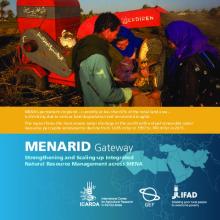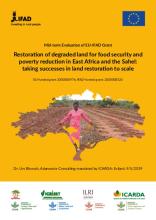/ library resources
Showing items 1 through 9 of 21.A framework was developed to elucidate (1) the drivers of land degradation, (2) pressures, (3) local impacts and vulnerabilities and (4) adaptation strategies.
Mongolia’s forests are located in the transitional zone between the great Siberian taiga and the Mongolian plateau of grassland steppe.
This report is the results of the mid-term review for the EU-IFAD project "Restoration of degraded land for food security and poverty reduction in East Africa and the Sahel: taking successes in land restoration to scale" Project.
MENA’s permanent cropland – currently at less than 6% of the total land area – is shrinking due to serious land degradation and recurrent droughts.
The final report of Mid-term evaluation of EU-IFAD Grant project "Restoration of degraded land for food security and poverty reduction in East Africa and the Sahel: taking successes in land restoration to scale".
The food system challenges require simultaneous action across different sectors and concerted efforts of diverse players in food systems.
The Lawra district of the Upper West region was selected as the case study. This study compared crop yields for FMNR and non-FMNR farmers. FMNR farmers are classified as having at least 8 trees per acre, with an average of 13 trees per acre (33 per ha) and a maximum of 40.
Con una porción relevante de territorio cubierto de bosques, Honduras puede beneficiarse de implementar REDD+ tanto para contribuir a mitigar el cambio climático como para adaptarse a sus consecuencias.
Históricamente América Central es una región con importantes niveles de inequidad en la distribución y uso de los recursos naturales.
Paginação
Land Library Search
Through our robust search engine, you can search for any item of the over 73,000 highly curated resources in the Land Library.
If you would like to find an overview of what is possible, feel free to peruse the Search Guide.








